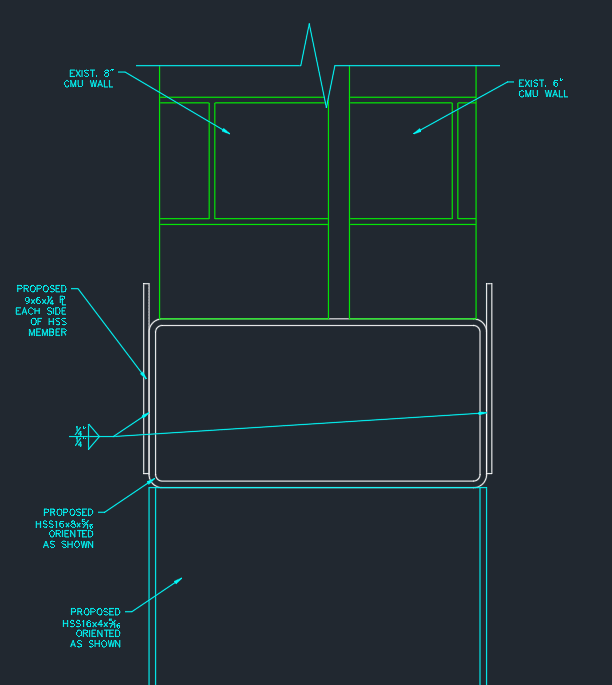IlliniPE
Civil/Environmental
- Jun 19, 2023
- 35
I have a client that is wanting to open up a CMU wall for as long of a span as I'll allow. Typically, I would just use angles for a lintel for the opening, but this wall is a combination of one 8" block wall and a 6" block wall, leading to an overall wall thickness of 14-15". I know I can find W shapes with this flange width, but I have major reservations against using the flange to support a wall instead of aligning with the web due to flange buckling and torsion. I have thought to add a plate to the outside faces of the steel to essentially make a steel section resembling a hollow CMU block.
Has anyone done design for eccentric loading on a W-shape or know of a design guide for it?
Has anyone done design for eccentric loading on a W-shape or know of a design guide for it?

